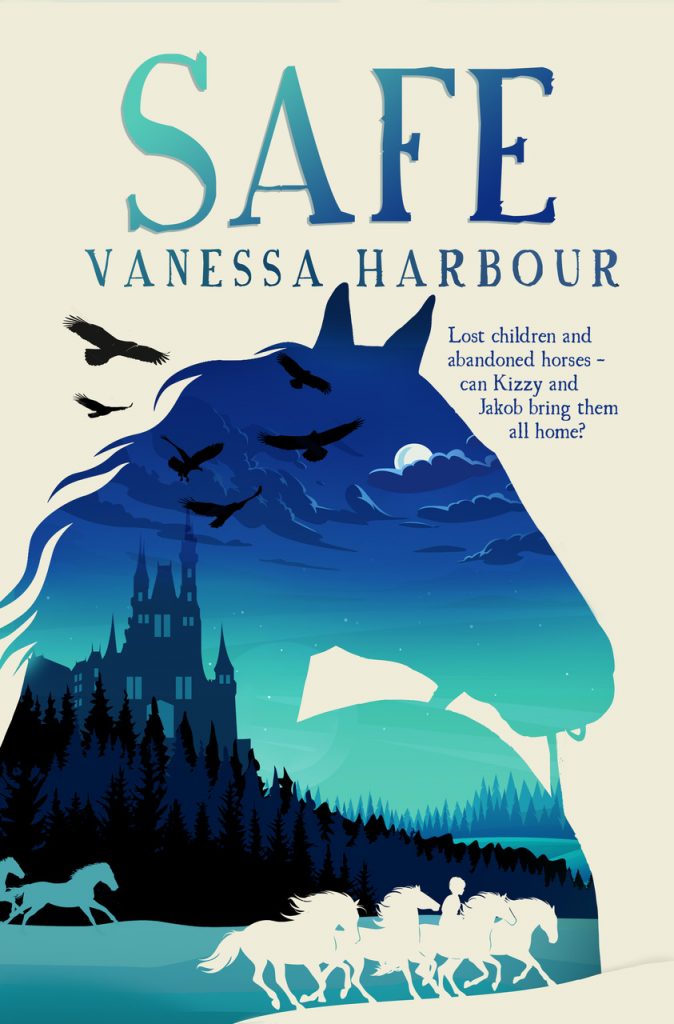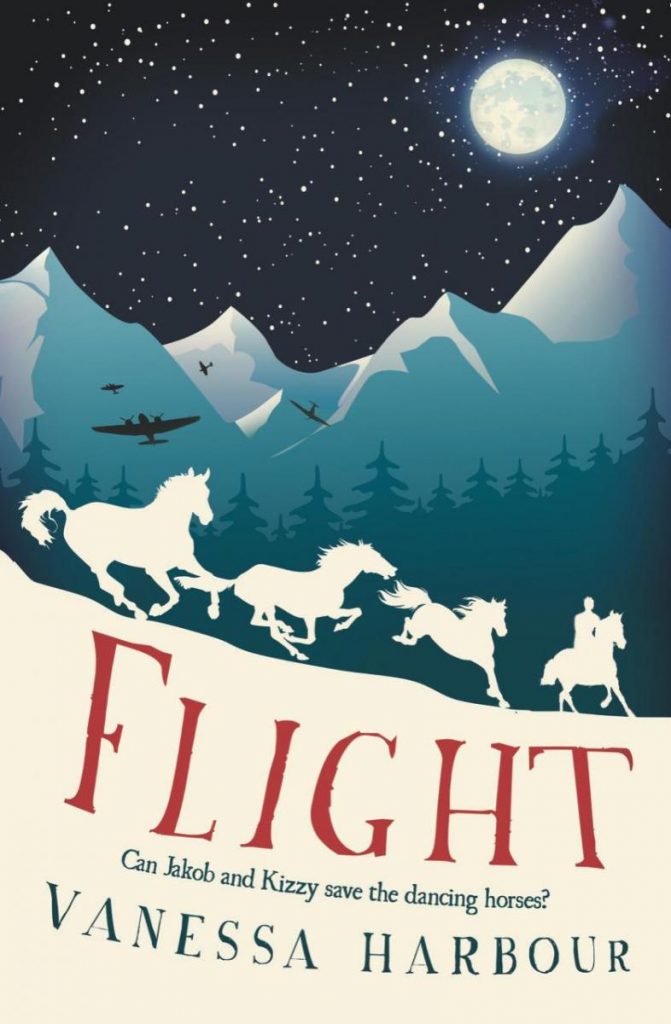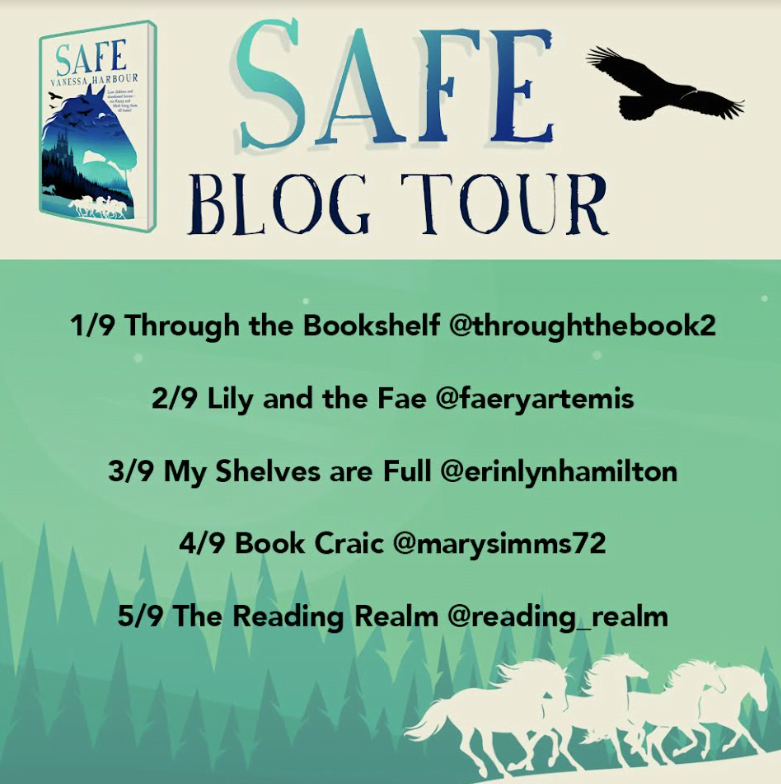We’re delighted to be the next stop on the SAFE blog tour and today we welcome Vanessa Harbour into The Reading Realm to talk about historical research and the editing process that goes into crafting a children’s novel!

In the chaotic last days of World War II, Jacob and Kizzy are tricked into a life or death journey. Far from home, they are attacked and only just escape. They hide in a seemingly deserted mansion, but they keep hearing strange noises… Investigating, they find it shelters not only forty abandoned horses but a small band of lost children, displaced by the war. With danger on every side, can Kizzy and Jakob keep them safe and get them all home?
Research – love it or hate it – you can’t avoid it with historical fiction!
One of the reasons I love writing historical fiction is precisely the reason others avoid doing it – research. You can’t write historical fiction without undertaking a lot of it. When I am writing initially I do enough research to write myself into the story but don’t overwhelm myself with detail. That comes in the editing process.
This is part of my writing process. You see I write cold then edit hot. What this means is I get the basic story down as I don’t plan a lot. I will have a beginning and a vague sense of the ending and maybe a couple of scenes in the middle but otherwise, I have no idea what is going to happen. This is why I write the basic story very quickly. I want to see it start to evolve and be sure that it has a narrative structure that works. I can write this basic structure in a few weeks.
If I am happy with it and I feel the structure works then the editing starts and that is what takes a long time. I imagine it is like tapestry or embroidery. You have to do the outline first, which is writing the basic structure and then you have to fill in the detail and the colour to bring it to life, which for me is the editing process.
While I am first writing I will leave notes saying ‘this needs expanding’ or ‘research this’ or else highlight something in yellow which also means I have to do research. I love doing research. There is nothing more exciting than finding a little nugget that probably the reader may not notice in the writing, but you will know it is there as you know it adds depth.
Research takes many forms: the immersive where you experience what you are researching. I did that with Flight where I worked with a horse whisperer. Primary research such as documents, media, books etc from the period can be enlightening. Secondary research, again books, documentaries, articles etc created about the period. Museums and archives. Visiting the area also could be beneficial for your area. The Internet has obviously made life much easier. However, you do have to make sure your sources are credible. It is easy for research to slip into procrastination and for the story never to be written. It is very easy to get caught up falling down a rabbit hole of research. You need to keep focused on what you need.

There is also the risk that you are so proud of your research that you embed every element of it in your story, so it is like walking through treacle as you try to read it, the reader feels overwhelmed with detail. What is important is that your research is there with a light touch in your manuscript. It should inform your writing, not deaden it.
Research can of course be a source of inspiration for your story. This is what happened with both Flight and Safe. With Flight, I was playing around on Google, asking the question ‘What happened to the Spanish Riding School during the Second World War?’ Up popped Operation Cowboy, the true story about how the American Army rescued the Lipizanner mares from Hostau by driving them cowboy-style back through the German lines. The Spanish Riding School had performed in front of General Patton just beforehand. It was through reading about this that a nugget of an idea of a story began to form and became Flight. With Safe, I knew I was using the same characters so it needed to be a similar story yet different. Once again I was doing some research and I came across the idea of the ‘Lost Children’. These were displaced children who had lost both parents and roamed around Europe towards the end of the war and afterwards in packs. They were sometimes called ‘Wolf Children’ because of this. This idea again triggered a nugget of a story that grew into Safe. As you can see research can be useful in all sorts of ways.
Enjoy your research and make sure you get that story written. Historical fiction is so enjoyable to write. Have fun having a go at it. It is so wonderful to create a book where children can walk in the shoes of characters from the past. It opens their eyes and makes them think about not just the issues of the past but also how those issues might apply to the present and even take them into the future. A chance for escapism.

Vanessa Harbour
Social Media:
Instagram @NessHarbour
Twitter @VanessaHarbour

